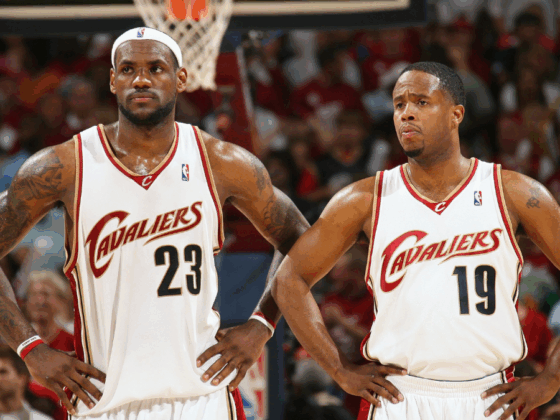
Basketball is still a sport that is far from unification in the year 2018. With different rulebooks in NBA, NCAA, Spanish league, Euro league, and competitions under the FIBA umbrella, it’s really hard to state which version of the game is the most useful and prominent. The NBA definitely has an edge with a more marketable model, but FIBA still has the final say when it comes to the World Cup and Olympics.
This state of the sport, however, doesn’t stop evolving. It’s actually quite the opposite – every league has a chance to introduce some kind of a game-changer, which later will influence the rest of the planet. That’s exactly what the Spanish league is trying to do these days. The ACB, also known as Liga Endesa for sponsorship reasons, introduced a brand new court widened by 1 meter for their preseason tournament in Guadalajara, Castilla-La Mancha.
While the decision definitely turned some heads around in Europe, it went unrecognized on the global scale for the most part. Yet, it could influence the sport in a variety of ways in the near future. The intentions behind the decision were crystal clear. Joan Roca, the Sports and Competition Director of the ACB, stated that the new dimensions will allow players to fully use the corners.
An additional 50 centimeters, or 19.6 inches, on the sides may not sound like a lot, but for shooters and dribbling specialists it’s like discovering a new Texas under your feet. Imagine Stephen Curry, Klay Thompson, Kyle Korver or Joe Ingles having this additional space.
It will also eliminate most of the step-outs and other unnecessary turnovers which are directly correlated with limited operating space in the corners. And plays like this won’t be disputed anymore (however, with Kobe Bryant, you’d never know).
On a deeper level, it also boosts the idea of introducing another revolutionary thing, a four-point line. The concept of having four-point shooting range is well-known and even implemented in some semi-pro leagues. The brightest examples come from the Big 3, even though its court has specific spots instead of a line.
There is no consensus on what four-point range should be. Some NBA teams have already introduced their self-implemented measurements. The Philadelphia 76ers are the biggest supporters of the whole thing and have been using their innovative courts for a while. Lloyd Pierce, the new coach of the Atlanta Hawks, had a little surprise for Trae Young in his workout for the team.
The league itself is already having the conversation. Back in 2014, it was nothing more than hypothetical talk, with Rod Thorn and Kiki Vandeweghe denying any serious engagement. However, the idea is clearly gaining steam. The trend of infinite three-point shooting records won’t be stopped in the near future. And it’s even clearer that elite players nowadays can shoot pretty effectively way outside of the traditional three-point land.
What’s more interesting, the leaders in the extremely long-range shooting are not the most recognizable three-point makers. Last season, LeBron James made 23 field goals on 52.3 percent shooting from 28+ feet. Giannis Antetokounmpo showed 46.7 percent accuracy, while Spencer Dinwiddie converted 40 percent of his shots from this distance. You won’t find Stephen Curry or Klay Thompson ranking high in this category. Damian Lillard was the craziest risk taker last season with 141 28-foot shots, followed by Eric Gordon (103), James Harden (77), and Kyle Lowry (69).
The introduction of a four-point line will most likely affect current court dimensions. And this is when an initiative Spanish league comes into play. The expansion of the court will undeniably give extra space behind the new line. Yes, it is really hard to imagine a “corner four” but there could be multiple expansions in the future.
How has the expanded court worked so far? As expected, the experiment went pretty smoothly for Spanish teams. There wasn’t a specific intent to use the extra space, but there were moments when new dimensions were very helpful. Players were fully behind the reform.
"Es muy bueno tener una cancha más grande"
"Solo veo ventajas"
"Para los tiradores va a ayudar mucho"
"Ojalá que en lugar de una prueba se convierta en una regla"Jugadores y entrenadores hablan sobre el test de ampliación de la cancha en el #CircuitoMovistar. pic.twitter.com/zfEY3PcQd4
— Liga Endesa (@ACBCOM) September 5, 2018
This was an exhibition tournament. Are we talking about any specific dates or deadlines when the rule can be officially implemented by FIBA? Unfortunately, there is no timetable. FIBA, however, will look at the possibility of changing things. It’s a giant bureaucratic sports monster, but it still acknowledges the importance of moving forward. The last such step was made in 2010 when FIBA has officially moved a three-point line further away from the basket to 22 feet and 2 inches (6.76 meters). This is an important follow-up.
With a widened court, FIBA can even outrun the NBA. Today’s NBA court is longer (94 feet versus 91.86 feet) and slightly wider (50 feet versus 49.21 feet). However, with new court dimensions proposed by the Spanish league, that won’t be the case anymore. The recently tested court is 52.5 feet in width. And who knows, we could see an increase in length also. In any scenario, the game will be changing rapidly, not only on the NBA courts.






